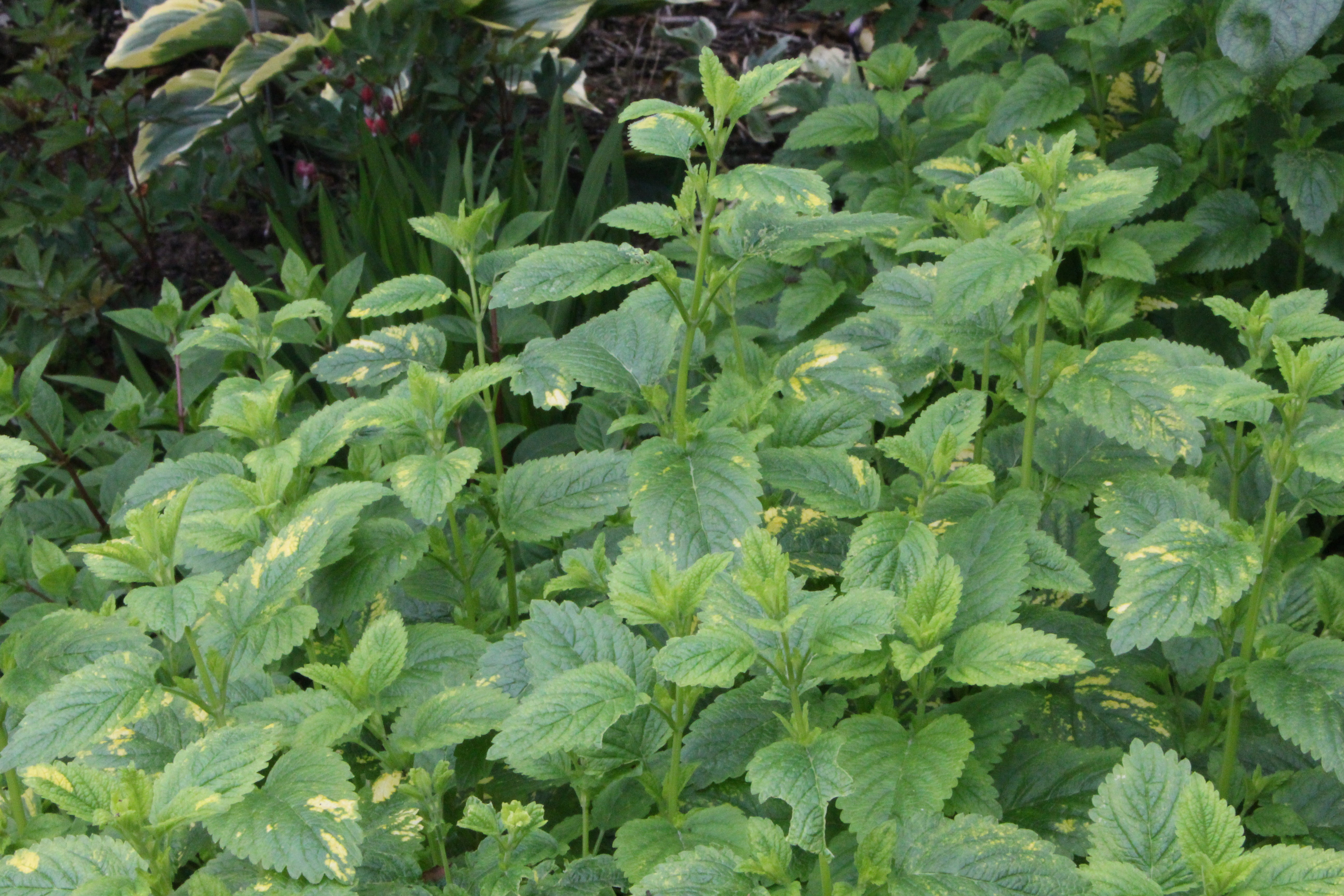Melissa officinalis 'Aurea' (v)
Approx. 0.5 litre pot
About this cultivar:
Melissa officinalis 'Aurea' (v) is a slightly smaller, variegated form of the common lemon balm that won't seed as rampantly. Flowers white in the summer.
The species, Melissa officinalis, has been know since ancient times. It was formally introduced into Spain in the 7th century, from which its use and domestication spread throughout Europe. Its use in the Middle Ages is noted by herbalists, writers, philosophers, and scientists, with Swiss physician and alchemist, Paracelsus, deeming it the elixir of life'. It was in the herbal garden of John Gerard, 1596 and it was cultivated in Thomas Jefferson's garden.
Often claimed to have antiviral and antibacterial properties, the leaves of this bushy, perennial herb will release a strong lemon fragrance when they are bruised. They are useful for creating calming teas, lemon balm pesto or flavouring drinks (like Pimms) fruit or fish dishes. The crushed leaves are also said to help keep mosquitoes at bay when they are rubbed onto the skin, while the nectar-rich flowers, which appear in summer, are a firm favourite of bees.
- Position: Full sun, partial shade
- Soil: Almost any soil, grows well in Ballyrobert
- Flowers: June, July, August
- Other features: Bees and Butterflies, Scented
- Hardiness: Fully hardy, grows well in Ballyrobert
- Habit: Clump forming, bushy
- Foliage: Deciduous
- Height: 45 - 75 cm (1.5 - 2.5 ft)
- Spread: 30 - 60 cm (1 - 2 ft)
- Time to full growth: 2 to 5 years
- Plant type: Herbaceous Perennial
- Colour: Green, yellow
- Goes well with: -
About this genus:
Melissa is a genus of perennial herbs in the Mint (Lamiaceae) family, native to Europe and Asia but cultivated and naturalized in many other places. The name Melissa is derived from the Greek word mélissa meaning 'honeybee', owing to the abundance of nectar in the flowers. Mélissa was also the name of a Cretan princess who first discovered how to obtain honey. Sources date the medicinal use of lemon balm (Melissa officinalis) to over 2000 years ago through the Greeks and Romans. It is mentioned by Theophrastus in the Historia Plantarum, dated to around 300 BC, as 'honey-leaf'.
As you can tell by now, Bees love this, to the extent it is STILL grown commercially to attract them. The officinalis species is also used to make essential oils and flavourings. Dried leaves may be added to sachets and potpourri.
The stems are square, like most other plants in the mint family. The leaves are borne in opposite pairs on the stems, and are usually ovate or heart-shaped and emit a lemony scent when bruised. Axillary spikes of white or yellowish flowers appear in the summer.
Easy to grow, they are very frost hardy plants which prefer full sun or light shade if summers are hot, however that won't happen on these islands! They are quick growing and easily established in most places. In the garden the most commonly grown species of this genus is Melissa officinalis, commonly known as lemon balm or just balm. Suggest you plant it somewhere where you can often pick off a leaf or often just smell it!


